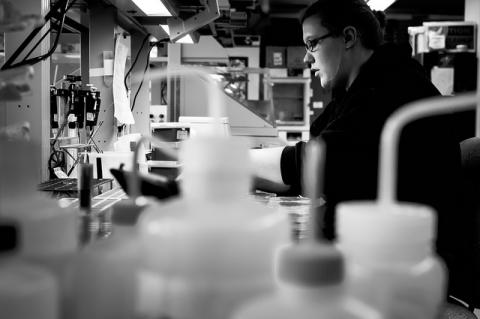Women in science, medicine, and global health

One of the six parallel sessions at the ASSET Final Event (Rome; 30-31 October 2017) dealt with gender issues, while one presentation was specifically about women and science.
Gender bias is powerful and insidious. It is an expression of unequal distribution of power within societies and of the low value placed on women's work and contributions to public life. Recent reports of sexual harassment and assault of women by men in powerful positions have regalvanised solidarity around women's rights, and remind us that disadvantage, discrimination, and sexism are a regular part of the lived experience of many women. These reflect broader and unjustified inequalities between men and women that have persisted across time, culture, and geography. That disadvantages exist for women in science, medicine, and global health is thus unsurprising—and yet wholly unacceptable. The renewed visibility of women in these areas, such as the Twitter campaign #allmalepanel, offer hope for change.
As part of this movement, The Lancet foresees to dedicate a special theme issue to women in science, medicine, and global health in late 2018 or early 2019.
Year of reckoning for women in science
The Lancet, Volume 391, Issue 10120, 10–16 February 2018, Pages 513
2017: a year in review
The Lancet, Volume 390, Issue 10114, 23 December 2017–5 January 2018, Pages 2753-2754
To substantiate its call for papers, The Lancet reports data from UNESCO (2015) showing how poorly women are recognised in science, medicine, and global health, In Europe as well as in south Asia or in China, and the same is in global health organisations. The situation is even worse considering the representation of women according to other factors such as ethnicity, class, sexuality, or others. This gender gap challenges the Sustainable Development Goal 5 to achieve gender equality and empower all women and girls by 2030. A low– above all high level –presence of women in science, medicine, and global health is due to a combination of factors, ranging from penalties for motherhood, unconducive graduate research environments, to lack of recognition as well as of support for leadership bids, fewer promotions and resources, and exclusion of women from the “old boys' club” cultures of science and medicine that nurture the fraternity, networking, and promotion of men.
Many solutions have been recommended including gender-positive imagery, mentoring, quotas on hiring and review committees, and anti-harassment and diversity training in workplaces that are not only women's issues—they require the full participation of everyone in deeper explanations and solutions. How do broader issues of inclusivity, intersectionality, social justice, and cultural norms of masculinity and femininity influence the place of women and their advancement, and how can they be harnessed for change? What are the best ways for men to promote gender equity? Even appreciating the wealth of valuable work done to date, it is evident that the rate of change is very slow and advancing all women in many areas in science, medicine, and global health has stalled.
References from The Lancet (Volume 390, Issue 10111, 2–8 December 2017, Pages 2423-2424)
- UNFPA Worlds apart: reproductive health and rights in an age of inequality, (2017)
- UNESCO UNESCO science report: towards 2030, (2015)
- I Vernos Quotas are questionable, Nature, 495 (2013), p. 39
- European Research Council Gender statistics, (2016)
- Y Xie, C Zhang, Q Lai China's rise as a major contributor to science and technology, Proc Natl Acad Sci USA, 111 (2014), pp. 9437-9442
- R Dhatt, I Kickbusch, K Thompson Act now: a call to action for gender equality in global health, Lancet, 389 (2017), p. 602
- S Hawkes, K Buse, A Kapilashrami Gender blind? An analysis of global public-private partnerships for health, Glob Health, 13 (2017), p. 26
- N Schwalbe Global health: generation men, Lancet, 390 (2017), p. 733
- LD Edmunds, PV Ovseiko, S Shepperd, et al. Why do women choose or reject careers in academic medicine? A narrative review of empirical evidence, Lancet, 388 (2016), pp. 2948-2958
- Nature Science for all, Nature, 495 (2013), p. 5
- J Raymond Most of us are biased, Nature, 495 (2013), pp. 33-34
- A Parks, R Redberg Women in medicine and patient outcomes: equal rights for equal work?, JAMA Intern Med, 177 (2017), p. 161
- Double jeopardy: Gender bias against women of color in science, (2015)
- NJ Hafkin National Assessments on Gender and Science, Technology and Innovation, (2016)
- Institute for Gender and the Economy Gender and the economy research briefs, (2017)
- A Rimmer Five facts about the gender pay gap in UK medicine, BMJ, 354 (2016), p. i3878
- R Jagsi, KA Griffith, R Jones, CR Perumalswami, P Ubel, A Stewart Sexual harassment and discrimination: experiences of academic medical faculty, JAMA, 315 (2016), pp. 2120-2121
- Hankivsky, C Reid, R Cormier, et al. Exploring the promises of intersectionality for advancing women's health research, Int J Equity Health, 9 (2010), p. 5
- Nature Gender imbalance in science journals is still pervasive, Nature, 541 (2017), pp. 435-436
- Elsevier Research Intelligence Gender in a global research landscape (2017)
